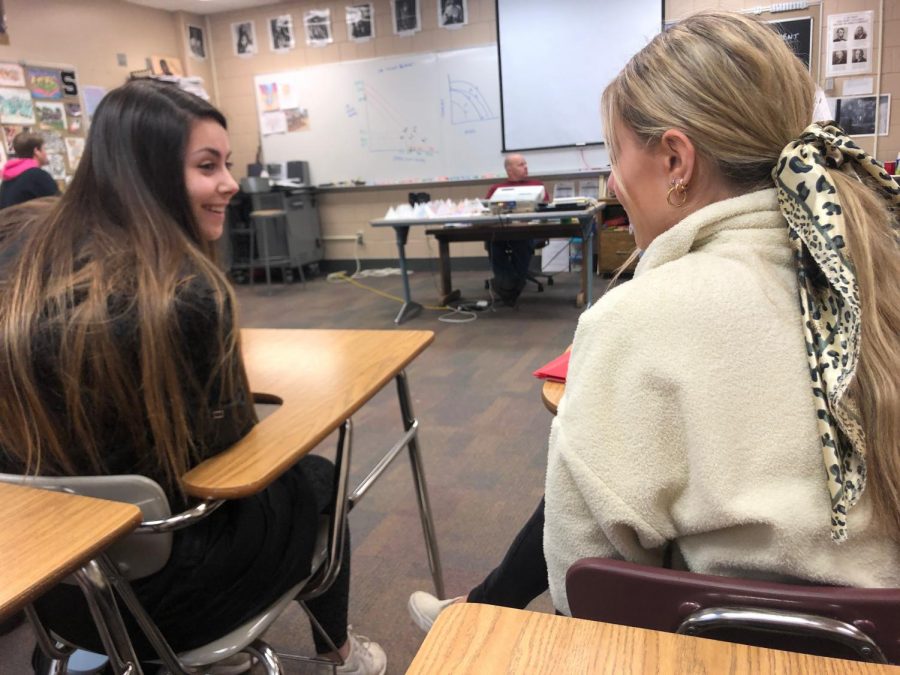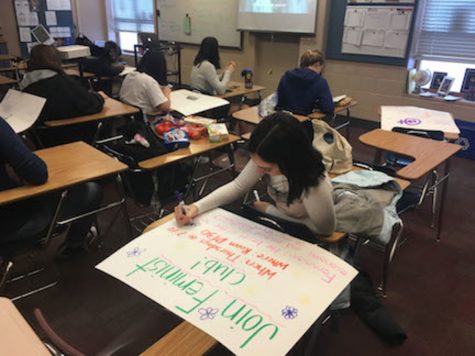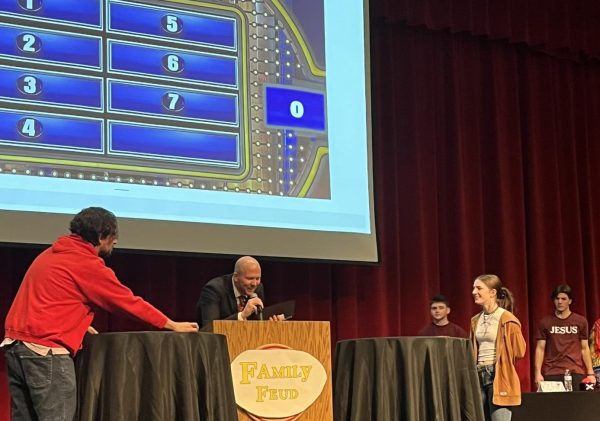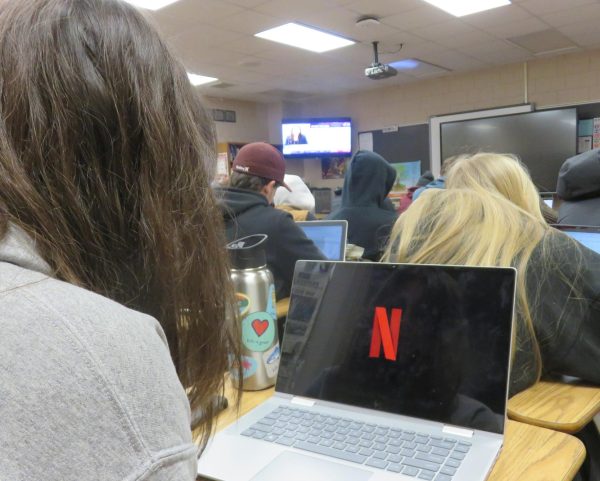Female stereotypes overlooked in high school
Engaging in conversation during Journalism class, seniors Alayna Christian and Sophie Watkins discuss the different stereotypes associated with high school girls on Feb. 11.
February 27, 2020
High school is more than text books and balancing several classes at once. It is an exciting time for teenagers to expand their knowledge, grow as a person, and begin to discover who they are and their passions. However, being a girl in high school involves undergoing the stress of trying to fit in and the pressure of being accepted by peers. Stereotypes classify people into categories based upon someone’s beliefs. Teenage girls are classified into stereotypes based upon popularity, how they present themselves everyday, and what sports or activities they are involved in.
“High school is such an interesting age because there is human desire to belong and to feel like they’re part of a group or part of something,” counselor Liz Nelson said. “Yet at the same time teenagers want to be individualistic and be their own person and they may even conform to their group norms, even though that’s not who they are.”
Stereotypes
The media has a large and powerful impact on the image of teenage girls. Flawless and perfect pictures of models and celebrities are constantly filling people’s social media feeds. The media pressures girls into thinking they have to look or act a certain way in order to be accepted by society. It is a social standard for girls to be skinny, tall, have a small face and a thigh gap and society created these ‘guidelines’ on how high school girls should look, and that is not the reality.
“The most followed people on social media are usually skinny and pretty and these people have those stereotypes that high school girls experience with presenting themselves a certain way,” senior Taylor Venancio said.
The major stereotype high school girls want to classify under is “the popular group” or the students who everyone knows about, the kids who have a lot of friends or are outstanding athletes. Coming into high school, girls can struggle to make new friends and try to fit in with the rest of the crowd. This can put pressure on a lot of girls to become someone else or to be someone they are not.
Venancio added, “There’s a stereotype in high school that girls only care about popularity and some girls only care about popularity and there are a select few that could care less, but I think being popular in high school puts pressure on a lot of girls.”
“There’s a stereotype in high school that girls only care about popularity and some girls only care about popularity and there are a select few that could care less, but I think being popular in high school puts pressure on a lot of girls.”
— Taylor Venancio
In the classroom, motivation fills the minds of determined high school girls to receive good grades and to perform well on quizzes and tests. However, drama can sometimes distract others in the classroom and girls will begin to focus on gossip instead of grades.
Junior LaElle Snyder said motivation in class is what helps her to perform well in school, but she thinks having drama with other classmates during class can be very distracting and make it tough to focus.
On the other hand, girls are more confident in the classroom more now than ever. The Me Too Movement has a large impact on women to not be afraid to speak up and use their voice to create positive change in society. Girls are not afraid to be the smartest in the class anymore and girls have realized the smartest kid does not always have to be a boy. In addition, girls are willing and motivated to continue to expand their knowledge past a high school education.
“Girls have a voice they’re not afraid to use anymore and I love that,” Nelson said. “It’s been progressing over time, but I really think the Me Too Movement has really strengthened girls in a way that my generation would have never had.”
Dress codes matter
There is a lot of controversy over dress codes in school and what students can and cannot wear. For girls, the main concern with clothing is wearing clothes that are exposing or revealing. Some girls are upset about not being able to wear certain clothes and the dress code targets more girls than boys.
Snyder said, “I feel like teachers and other students tend to judge and can make students feel insecure about what they are wearing when they should be able to express themselves in any way they wish to.”
From what girls choose to wear to school, they are categorized into certain stereotypes that reflect what they wear on a daily basis and this is how some stereotypes form. In addition, all students are encouraged to wear clothing that is learning appropriate.
“Be mindful, there may be consequences if you dress a particular way, or there may be stereotypes put on you that may or may not be true,” Nelson said. “Think about it as you’re coming into a learning environment and not only do we want you to be prepared to learn, but we want others to be prepared to learn too.”
From a girl’s perspective, high school can be both exciting and stressful. It is important for high school girls to stay motivated in class, to express and be themselves, and to have strong relationships with their peers. Finally, the biggest advantage high school girls have is confidence. Confidence in the classroom, in the hallways, with their friends, and everywhere throughout the school.
“In the course of my 27 years of being in the school system and in our district, I’ve seen girls confidence increase and I think girls feel more confident being smart and being themselves,” Nelson said.
















